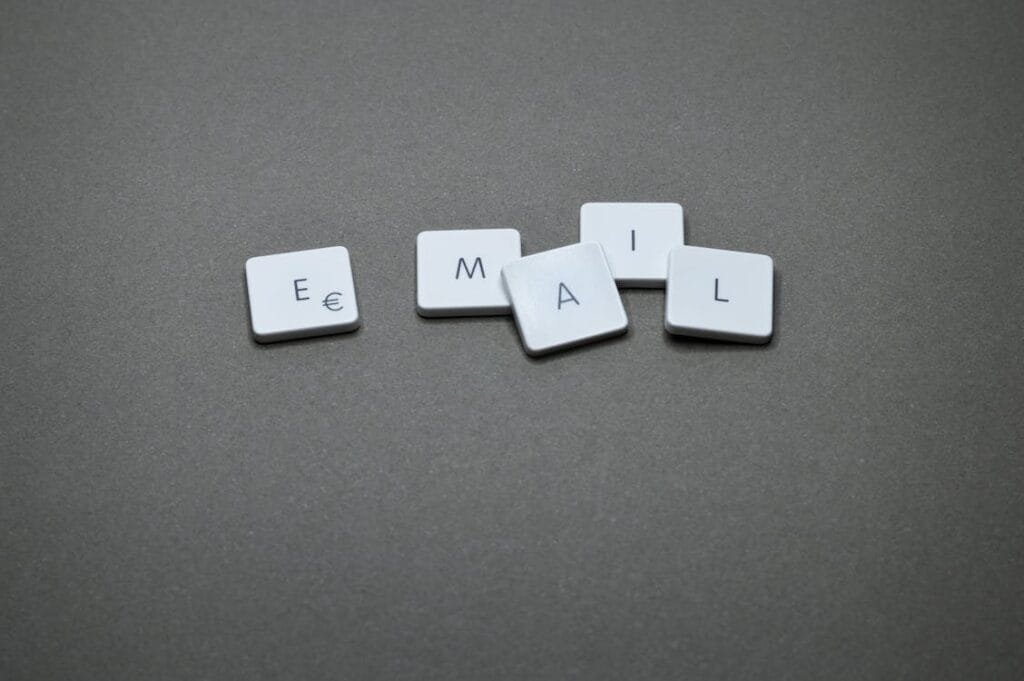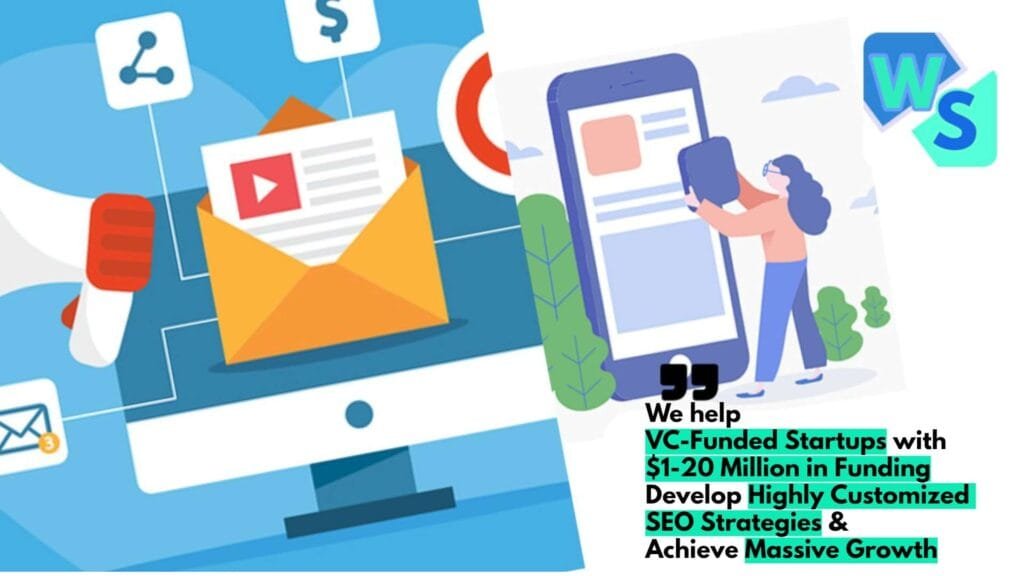Understanding Customer Acquisition
Understanding customer acquisition is pivotal for businesses aiming to enhance their customer base growth. It encompasses the entire process of guiding potential customers from initial awareness to making a purchase decision.
The Process of Customer Acquisition
The process of customer acquisition involves several stages. You begin by taking a member of your target audience through the purchasing journey, which includes the following steps:
- Awareness: Customers learn about your brand or product.
- Consideration: Customers evaluate your offerings compared to competitors.
- Decision: Customers make the choice to purchase.
A tailored, sustainable, and repeatable strategy is necessary to nurture prospects through these stages effectively. By aligning your sales and marketing efforts, you can save up to 30% on overall customer acquisition costs (Qualtrics). This alignment not only streamlines your efforts but also enhances the effectiveness of your campaigns.
Importance of Customer Acquisition Costs
Understanding customer acquisition costs (CAC) is essential for your business’s profitability. It can be as much as seven times more expensive to acquire new customers than to retain existing ones. Therefore, a strategic and proactive approach is necessary when forming your acquisition strategies. By focusing on optimizing customer base growth, you can not only improve your revenue potential but also attain significant savings (Qualtrics).
Tracking your customer acquisition metrics allows you to gauge the effectiveness of your marketing and sales initiatives. By analyzing these metrics, you can identify successful channels and campaigns, helping you optimize your strategies for growth. Understanding the costs associated with acquiring a new customer ensures that you allocate your resources wisely and make informed decisions that align with your growth objectives.
In summary, focusing on an efficient customer acquisition process and keeping a close eye on your acquisition costs can significantly contribute to your overarching goal of expanding the customer base and enhancing business performance. For further insights into effective strategies for customer acquisition, explore our guide on customer acquisition tactics.
Effective Customer Acquisition Strategies
An effective customer acquisition strategy is essential for optimizing customer base growth. To achieve this, you must focus on aligning sales and marketing efforts, utilizing various acquisition channels, and enhancing customer experience.
Aligning Sales and Marketing Efforts
Aligning your sales and marketing teams is crucial for maximizing customer acquisition efficiency. When both departments collaborate effectively, companies can save up to 30% on their overall customer acquisition costs (Qualtrics). Establishing common goals and fostering open communication will lead to more coordinated campaigns and streamlined processes.
To facilitate this alignment, consider the following steps:
| Step | Description |
|---|---|
| Define Shared Goals | Establish common objectives that both sales and marketing teams can work towards. |
| Develop Cross-Training Programs | Implement training sessions to help each team understand the other’s functions more thoroughly. |
| Utilize Performance Metrics | Track and analyze shared metrics to gauge the success of initiatives and adjust strategies accordingly. |
Utilizing Different Acquisition Channels
There are five main customer acquisition channels you should consider for reaching your target audience effectively:
- Search Marketing: Includes SEO and paid search options to enhance online visibility.
- Social Media: Leverage both organic and paid social media efforts to engage with potential customers.
- Email Marketing: Use targeted email campaigns to nurture leads and convert them into customers.
- Traditional Media Advertising: Explore methods such as print, radio, and television advertising to reach diverse demographics.
- Events: Participate in webinars and conferences to create personal connections with potential customers.
Tracking customer acquisition metrics is essential for understanding the effectiveness of these channels. Key metrics to monitor include conversion rates, cost per acquisition, and customer lifetime value.
Focusing on Customer Experience
A best-in-class customer experience at every stage of the customer journey is one of the most effective means of attracting new customers and fostering brand advocates (Qualtrics). Prioritizing customer experience involves:
- Gathering Customer Feedback: Regularly collect input from your customers to identify areas for improvement.
- Personalizing Interactions: Tailor communications and experiences to meet the specific needs of individual customers.
- Streamlining Processes: Ensure that the customer journey is seamless, reducing friction and enhancing satisfaction.
Implementing a strong focus on customer experience not only boosts your acquisition efforts but can also lead to increased customer loyalty and retention over time. For more on improving customer loyalty, explore our resources on improving customer loyalty. By optimizing these strategies, you will be well-equipped to grow and sustain your customer base effectively.
Significance of Market Segmentation
Understanding market segmentation is pivotal in optimizing customer base growth. Segmenting your audience allows you to tailor your marketing efforts, leading to increased efficiency and profitability.
Impact of Segmentation on Marketing ROI
Segmented, targeted, and triggered campaigns are responsible for 77% of marketing ROI, clearly demonstrating the importance of market segmentation in boosting revenue. By leveraging precise segmentation, you can better understand your customers’ motivations and create campaigns that resonate with specific groups. This strategy fosters engagement and ultimately drives better returns on your marketing investments (Yieldify).
| Campaign Type | Marketing ROI (%) |
|---|---|
| Segmented Campaigns | 77 |
| Non-segmented Campaigns | 32 (estimated) |
Benefits of Tailoring Strategies by Segments
Businesses that tailor their strategies to specific customer segments often see a 15% yearly profit growth, compared to just 5% for those that do not employ segmentation. This showcases how market segmentation can significantly enhance growth and ensure that marketing efforts are effectively addressing the needs of different customer groups (Yieldify). Tailoring marketing messages allows you to build stronger relationships and foster loyalty with your customers.
Importance of Personalization and Customer Loyalty
Personalization is a crucial factor in developing customer loyalty. In fact, 79% of consumers demonstrate greater loyalty to brands that employ personalization tactics. Using market segmentation facilitates the creation of personalized customer journeys that effectively address individual needs and preferences (Yieldify). Implementing these strategies not only enhances customer experiences but ultimately drives customer retention, reinforcing the connection between segmentation and loyalty.
Incorporating market segmentation into your strategic framework can significantly contribute to effective customer base growth. It allows you to optimize your marketing tactics, ensuring that you are not only reaching but also engaging potential customers in a meaningful way. For more information on how to implement these strategies successfully, consider exploring our articles on customer demographics analysis and customer base segmentation.
Types of Customer Segmentation
Customer segmentation is a vital strategy for optimizing customer base growth. Understanding the various types of segmentation can help you tailor your marketing efforts effectively and cater to the needs of your target audience. Below, you will explore three primary types of customer segmentation: geographic and demographic segmentation, behavioral and psychographic segmentation, and segmentation by customer value.
Geographic and Demographic Segmentation
Geographic segmentation involves categorizing your customers based on their location. This type includes factors such as country, region, city, and climate. Understanding where your customers are located can help you tailor your marketing strategies to meet local needs and preferences.
Demographic segmentation focuses on the characteristics of the customers themselves. Common demographic factors include age, gender, income, education level, marital status, and family size. This type of segmentation helps in targeting specific groups effectively. Both geographic and demographic segmentation allow for a more precise approach to marketing, as they provide insights into potential preferences and purchasing behaviors of different segments.
| Segmentation Type | Key Factors |
|---|---|
| Geographic | Country, region, city, climate |
| Demographic | Age, gender, income, education level |
For more information on how to analyze customer demographics, please refer to our article on customer demographics analysis.
Behavioral and Psychographic Segmentation
Behavioral segmentation is based on customers’ interactions with your brand, including purchasing habits, product usage, brand loyalty, and engagement levels. This approach allows you to identify patterns and customize your marketing efforts to better align with customer behaviors.
Psychographic segmentation, on the other hand, delves deeper into the psychological aspects of customers. It includes factors such as lifestyle, values, interests, and personality traits. Combining both behavioral and psychographic data provides a comprehensive view of your customers, enabling you to create more effective marketing messages and campaigns that resonate with them.
| Segmentation Type | Key Factors |
|---|---|
| Behavioral | Purchasing habits, product usage, brand loyalty |
| Psychographic | Lifestyle, values, interests, personality traits |
For strategies on enhancing customer loyalty based on these insights, check our guide on improving customer loyalty.
Segmentation by Customer Value
Segmentation by customer value is essential for identifying the potential worth of different customer segments to your business. This type categorizes customers based on their purchasing power, frequency of purchases, and overall profitability. By understanding which segments offer the highest value, you can allocate your marketing resources efficiently and tailor your acquisition tactics accordingly.
This segmentation allows businesses to focus on nurturing high-value customers while still engaging lower-value segments for potential growth. Strategizing based on customer value can lead to increased profitability and more effective marketing spend.
| Segmentation Type | Key Factors |
|---|---|
| Customer Value | Purchasing power, frequency of purchases, profitability |
To explore how to implement segmentation strategies effectively, see our resource on customer base segmentation.
Emphasizing these different types of segmentation will not only help you understand your customers better but also refine your strategies for attracting and retaining them, ultimately leading to successful customer base growth strategies.
Leveraging Customer Segmentation
Implementing effective customer segmentation can significantly enhance various marketing strategies, particularly in email campaigns, message tailoring, and identifying market opportunities.
Improving Email Campaign Performance
Segmented and well-targeted email campaigns deliver an impressive 77% return on investment (ROI) (Yieldify). By targeting specific customer segments, you can dramatically increase the effectiveness of your email marketing efforts.
The impact of segmentation is profound; campaigns utilizing segmentation have experienced up to a 14.3% increase in open rates and a staggering 760% growth in revenue.
To illustrate the potential increase in performance, consider the table below:
| Segmentation Type | Open Rate Increase | Revenue Increase |
|---|---|---|
| Geographic Segmentation | 10% | 500% |
| Behavioral Segmentation | 12% | 620% |
| Demographic Segmentation | 14.3% | 760% |
Creating targeted lists based on behavioral triggers, demographics, or geographic locations can ensure that your messages resonate more with your audience.
Enhanced Marketing Message Tailoring
Customer segmentation enables you to tailor your marketing messages effectively. By understanding the unique needs and preferences of different segments, you can foster stronger customer relationships and improve retention rates. Personalized messaging creates a more relevant experience for the customer.
Segmentation models can include various factors such as:
- Geographic segmentation
- Demographic segmentation
- Behavioral segmentation
- Psychographic segmentation
Utilizing these models allows you to enhance products and services that align directly with customer expectations, driving both cost efficiency and improved business outcomes (Touchpoint).
Identifying Market Opportunities
Leveraging customer segmentation not only improves marketing strategies but also aids in identifying untapped market opportunities. By gaining a comprehensive understanding of the characteristics and behaviors of distinct customer segments, you can discover new niches or underserved groups within your target market.
Implementing effective segmentation strategies can facilitate:
- Impact assessments on product development and marketing
- Identifying cross-selling and upselling opportunities
- Enabling entry into new markets or demographics
Adopting segmentation models allows you to stay ahead of market trends and customer needs while aligning your offerings to capture growth effectively. For further insights, explore our resources on customer base management techniques and customer acquisition tactics.
Customer Lifetime Value (CLV)
Understanding CLV and its Importance
Customer Lifetime Value (CLV) is a key metric that indicates the total revenue your business can expect from a single customer account throughout their relationship with you. Understanding and optimizing CLV is essential for acquiring and retaining valuable customers, ultimately leading to increased revenue over time (HubSpot).
By focusing on CLV, you can identify trends, preferences, and spending behaviors, enabling data-driven decisions that enhance your marketing strategies. This leads to tailored approaches that resonate more effectively with your target audience, which is crucial for increasing your customer base.
| Benefit of CLV | Description |
|---|---|
| Revenue Prediction | Predict future revenue streams based on customer behavior. |
| Cost Reduction | Reduce customer acquisition costs by retaining existing customers. |
| Enhanced Loyalty | Focus on improving customer loyalty through targeted strategies. |
Calculating and Improving CLV
To calculate CLV, you need to consider several factors such as average purchase value, purchase frequency, and customer lifespan. The basic formula is:
[
CLV = (Average Purchase Value) \times (Average Purchase Frequency) \times (Average Customer Lifespan)
]
Improving CLV can be achieved by encouraging repeat purchases and identifying high-value customers. Segmenting your audience based on customer value and tailoring your products or marketing strategies accordingly can result in higher revenue. For instance, implementing targeted campaigns or loyalty programs can enhance customer engagement. Additionally, focusing on customer retention methods like excellent customer service can significantly contribute to your customer acquisition tactics.
Impact of CLV on Marketing Strategy
CLV profoundly impacts your marketing strategy by enabling tailored messaging and personalization. As CLV helps identify which customer segments are the most profitable, you can allocate resources more effectively to target these segments, thereby optimizing your marketing efforts. Enhancing customer loyalty directly correlates with an increase in CLV; thus, investing in customer relationship management strategies can yield substantial long-term benefits.
Higher CLV also simplifies financial planning by offering insights into revenue changes and helping make accurate projections about future cash flows. By understanding your CLV, you can craft an informed strategy for expanding market reach, ensuring that your business stays competitive and profitable over time.
Customer Acquisition Cost (CAC)
Definition and Calculation of CAC
Customer Acquisition Cost (CAC) refers to the total expense incurred by a business to acquire a new customer. This includes marketing, advertising, sales personnel costs, and any other expenses associated with acquiring new clients. To calculate CAC, you can use the following formula:
[
\text{CAC} = \frac{\text{Total Cost of Sales and Marketing}}{\text{Number of New Customers Acquired}}
]
This calculation helps you understand how much you are spending to attract each new customer and allows for more strategic planning in your marketing efforts.
Importance in Business Profitability
Understanding CAC is crucial for assessing business profitability. High acquisition costs can indicate inefficiency in your sales and marketing processes. On average, it can cost as much as 7 times more to acquire new customers than to retain existing ones (Qualtrics). This highlights the necessity of balancing your focus on customer acquisition and retention.
By effectively managing CAC, you can improve your return on investment (ROI) and enhance overall business sustainability. Efficient management of these costs directly correlates with increased profitability and reflects the efficiency of your sales strategies.
| Components of CAC | Costs |
|---|---|
| Total Marketing Expenses | $X |
| Sales Team Expenses | $Y |
| Advertising Costs | $Z |
| Total | $X + $Y + $Z |
| New Customers Acquired | N |
| CAC Formula | (Total Costs) / N |
Managing CAC and Improving ROI
To optimize CAC and improve ROI, businesses should implement several strategies. Allocate approximately 60% of your resources to customer retention and 40% to lead acquisition through effective methods such as SEO and targeted advertising (Lumoa). Focusing on customer loyalty initiatives can increase lifetime customer value and reduce overall acquisition costs.
Furthermore, adopting analytical tools to track and manage customer demographics and acquisition channels will help identify the most cost-effective methods for attracting new customers. This data-driven approach allows you to refine your customer acquisition tactics and enhance your marketing strategies.
For more insights into managing customer relationships effectively, refer to our section on customer relationship management strategies. By accurately measuring and managing CAC, you can strategically position your business for future growth and sustainability within your market.
Balancing Acquisition and Retention
Balancing customer acquisition and retention is essential for sustainable growth. By strategically allocating resources, utilizing technology, and maximizing acquisition channels, you can effectively enhance your overall customer base growth.
Allocating Resources for Retention
To achieve a successful balance between customer acquisition and retention strategies, it is recommended that you allocate approximately 60% of your resources toward customer retention, while the remaining 40% should focus on lead acquisition through various methods such as SEO and advertising (Lumoa). This approach not only fosters loyalty among existing customers but also ensures that you are consistently engaging them, which can significantly reduce churn rates.
| Resource Allocation | Focus Area |
|---|---|
| 60% | Customer Retention |
| 40% | Customer Acquisition |
This allocation allows you to invest in initiatives that enhance the customer experience, such as building loyalty programs, which can incentivize repeat purchases and increase customer lifetime value.
Using Technology for Customer Retention
Investing in technology can significantly enhance your customer retention efforts. AI-powered chatbots, for instance, can serve as valuable tools for onboarding and retaining users. They can offer personalized assistance, make tailored offers, collect feedback, and provide quick solutions to customer inquiries (Lumoa).
Utilizing customer relationship management (CRM) software can also help track customer interactions, preferences, and purchase history, enabling you to provide a more personalized experience. This personalization is essential for improving customer loyalty and retention.
Maximizing Acquisition Channels
To effectively maximize both acquisition and retention channels, prioritize methods that serve dual purposes. For example, content marketing—such as blogs, industry reports, and case studies—not only improves search visibility and credibility but also contributes to customer retention by providing valuable information to existing clients.
Additionally, initiatives like loyalty programs and referral strategies can help you reward loyal customers while also broadening your customer base. These strategies enhance customer engagement, retention, and acquisition, driving long-term relationships with your audience (Lumoa).
Creating a comprehensive strategy that balances these aspects will help you effectively optimize customer base growth. For more insights, you may want to explore customer acquisition tactics and customer relationship management strategies.




















